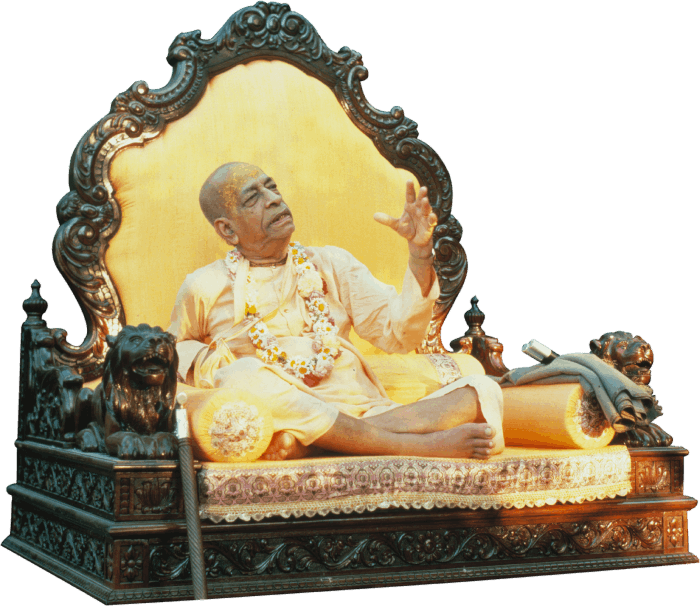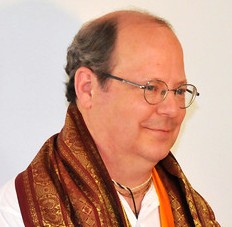
Your ever well-wisher

A.C. Bhaktivedanta Swami

KRISHNAPATH
The Official Source For Srila Prabhupada's Original Books

Your ever well-wisher

A.C. Bhaktivedanta Swami

The Official Source For Srila Prabhupada's Original Books

STEPHEN KNAPP - Reincarnation is called samsara in the classic Vedic texts of India. The wordsamsara is Sanskrit and means being bound to the cycle of repeated birth and death through numerous lifetimes. How this works is that those who are materially conditioned transmigrate through different bodies according to one’s desires and past activities (or karma) and familiarities. Their desires, if materially motivated, requires a physical body to enable them to continue to work out their material longings in various conditions of life.
Generally, in the Eastern traditions it is considered that all forms of life or species have souls, which is the entity who reincarnates. Previous to when an entity is ready to incarnate as a human being on Earth, the soul may have gone through a whole series of lives in order to experience various levels of existence and consciousness. The principle is that an entity may actually progress through the different species of life, gradually working their way up until they reach the human form. Of course, the body is only the covering of the soul in which it appears. The living being will continually move upward in its cycles of reincarnation until it has experienced all the main varieties of existences that the material realm has to offer. This way the living being is fully experienced in working out material desires or longings in all kinds of forms by the time it reaches the human stage. Of course, not every being may have to go through all of this.
How reincarnation works is most elaborately described in the Vedic texts of India. The Bhagavad-gita (8.6) explains that whatever state of consciousness one attains when he or she quits this body, a similar state will be attained in the next life. This means that after the person has lived his or her life, the numerous variegated activities of the person forms an aggregated consciousness. All of our thoughts and actions throughout our life will collectively influence the state of being we are in at the time of death. This consciousness will determine what that person is thinking of at the end of one’s life. This last thought and consciousness will then direct where that person will most likely go in the next life because this state of being carries over from this life into the next.
As it is further explained, the living entity in the material world carries the different levels of consciousness from one body to another in the same way the air carries aromas. In other words, we cannot see the aromas that the air carries, yet it can be perceived by the sense of smell. In a similar way, we cannot see the types of consciousness that the living being has developed, but it is carried from this body at the time of death and proceeds to another body in the next life to take up where it left off from the preceding existence. Of course, the next life may be in another physical body or in a subtle body in between births, or even in heavenly or hellish states of being.
After death, one continues the consciousness that was cultivated during life. It is our thought patterns that build the consciousness, which then directs us toward the required experience after death. One’s state of consciousness or conception of life exists in the subtle body, which consists of mind, intelligence and false ego. The soul is covered by this subtle body, which exists within the gross material form. When the physical vehicle can no longer function, the subtle body and soul are forced out of it. Then, when the time is right, they are placed in another physical frame which properly accommodates the state of mind of the living entity. This is how the mental state which attracts the dying man determines how he begins his next life. If the dying man is absorbed in thoughts of material gain or sensual pleasures of wife, family, relatives, home, etc., then he must, at some point, get another material body to continue pursuing his worldly interests. After all, how can one satisfy his material desires without a material body? After death, one continues the consciousness that was cultivated during life. It is our thought patterns that build the consciousness, which then directs us toward the required experience after death. One’s state of consciousness or conception of life exists in the subtle body, which consists of mind, intelligence and false ego. The soul is covered by this subtle body, which exists within the gross material form. When the physical vehicle can no longer function, the subtle body and soul are forced out of it. Then, when the time is right, they are placed in another physical frame which properly accommodates the state of mind of the living entity. This is how the mental state which attracts the dying man determines how he begins his next life. If the dying man is absorbed in thoughts of material gain or sensual pleasures of wife, family, relatives, home, etc., then he must, at some point, get another material body to continue pursuing his worldly interests. After all, how can one satisfy his material desires without a material body?
For this reason, it is best that a person always cultivate pious activities and spiritual thoughts to help him or her enter a better life after death. If a person has tried to cut the knots of attachment to materialistic life, and engaged in spiritual activities, to the degree of advancement the person has made, he or she can go to a heavenly realm after death, or even reach the abode of Krishna, or the kingdom of God.
In any case, we can begin to understand that dying in the right consciousness in order to become free from the cycle of birth and death is an art that takes practice. We have to prepare for the moment of death so that we are not caught off guard or in an unsuitable state of mind. This is one of the purposes of yoga.
After what can be millions of births and deaths through many forms of life, trying to satisfy all of one’s material desires, the soul may begin to get tired of these continuous attempts for happiness that often turn out to be so temporary. Then the person may turn toward finding spiritual meaning in life. In one’s search for higher meaning, depending on the level of consciousness that a person develops, he or she can gradually enter higher and higher levels of development. Finally, if a person detects that he is actually not this body but a spiritual being within it, and reaches a spiritual level of consciousness, he can perfect his life so that he will enter the spiritual strata and no longer have to incarnate in the physical world. Thus, liberation is attained through Self-realization and the development of devotional service to God, which is the perfection of the spiritual path. Through human existence on Earth, the doorway to many other planes of existence is possible, including entrance into the spiritual world. It only depends on how we use this life.
The idea that a person has only one life to either become qualified to enter heaven or enter eternal damnation offers the soul no means of rehabilitation and only endless misery. This is not reasonable. The doctrine of reincarnation gives anyone ample scope to correct and re-educate himself in future births. An eternity in hell means that an infinite effect is produced by a finite cause, which is illogical. God has not created men to become nothing more than ever-lasting fuel to feed the fires of hell. Such a purpose in His creation would not come from an ever-loving God, but comes from the faulty ideas of man and his imperfect conceptions of God. After all, how many spotless men could there be in this world? Who has such a pure character to receive an immediate pass to heaven? The Bhagavad-gita explains that even the worst sinner can cross the ocean of birth and death by ascending the boat of transcendental knowledge. We simply have to be sincere in reaching that boat.

 SAVE QR CODE
SAVE QR CODE